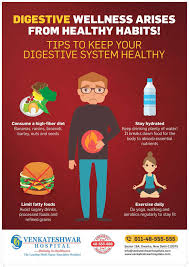The digestive system is responsible for digesting food, absorbing it, and getting rid of waste at the other end. Digestive system problems are many and common, such that 80% of people suffer from symptoms that indicate an illness in their digestive system. Dietary modifications can provide an easy and simple treatment for digestive problems, including indigestion, constipation, and bowel disorders. Maintaining the health of the digestive system by changing eating habits leads to an overall improvement in overall health as nutrients are absorbed more effectively. Process. Digestion:
The digestive system is a tube several meters long that begins in the mouth and ends in the anus at the other end. It consists of eight basic components: the mouth, esophagus, stomach, small intestine, large intestine, pancreas, bile vesicle (gallbladder), and liver. Each part of the digestive system plays a role in breaking down the food we eat so that the body can absorb and use it.
the mouth :
Digestion of food begins in the mouth because the process of chewing stimulates digestive juices in the lower part of the digestive system to be secreted. Chewing also mixes the food with saliva, which contains an enzyme called amylase, which launches the process of digesting starchy foods such as bread, potatoes, rice, and pastries. In fact, breaking down food increases the effectiveness of digestion. It gives digestive enzymes the opportunity to enter the food more effectively.
Stomach:
After swallowing food, it descends through a tube called the esophagus to move to the stomach. The stomach secretes acids into it, where the process of digesting protein foods such as: meat, fish, and dairy products begins. The stomach wall remains protected from these acids as a result of a dense foam layer.
Small intestine and pancreas: After food leaves the stomach, it moves to the small intestine, where more enzymes continue the digestion process. Some of these enzymes are secreted in the digestive system itself, while other enzymes are secreted in the pancreas. Bile, a digestive juice that helps digest fats, also enters the small intestine, where nutrients are absorbed through the lining of the small intestine.

